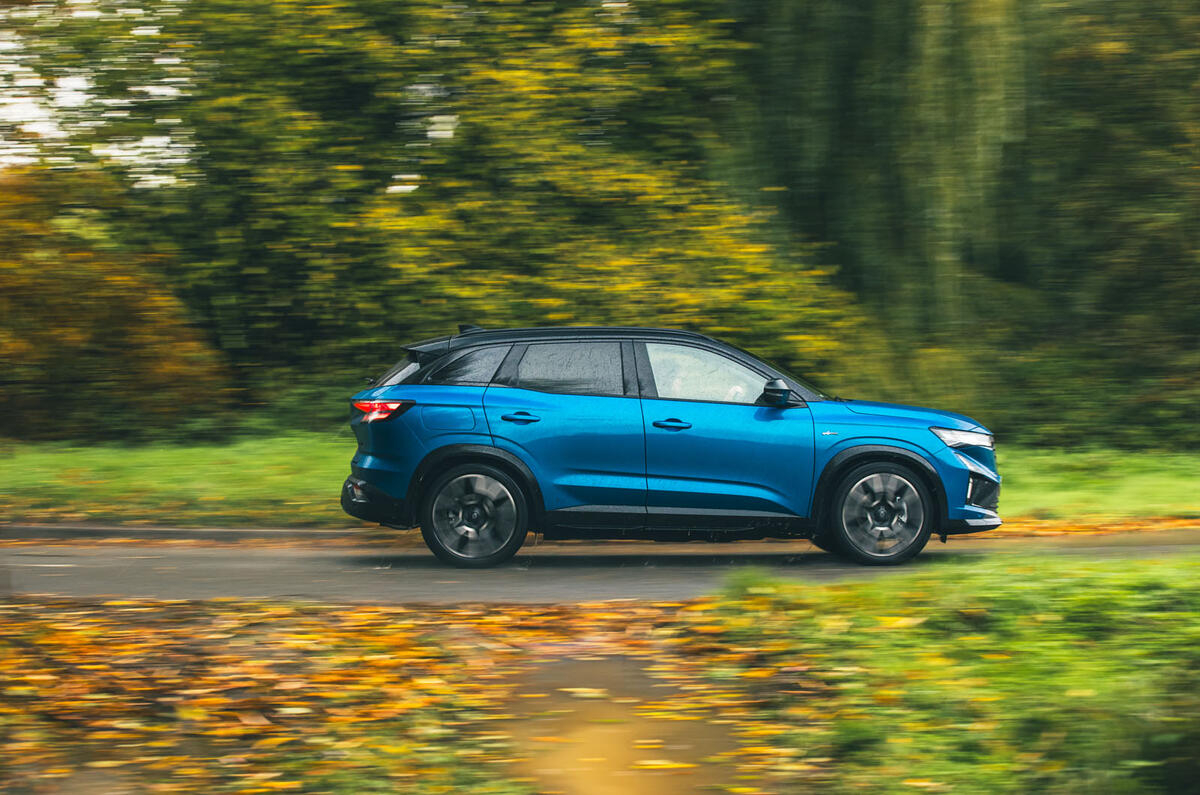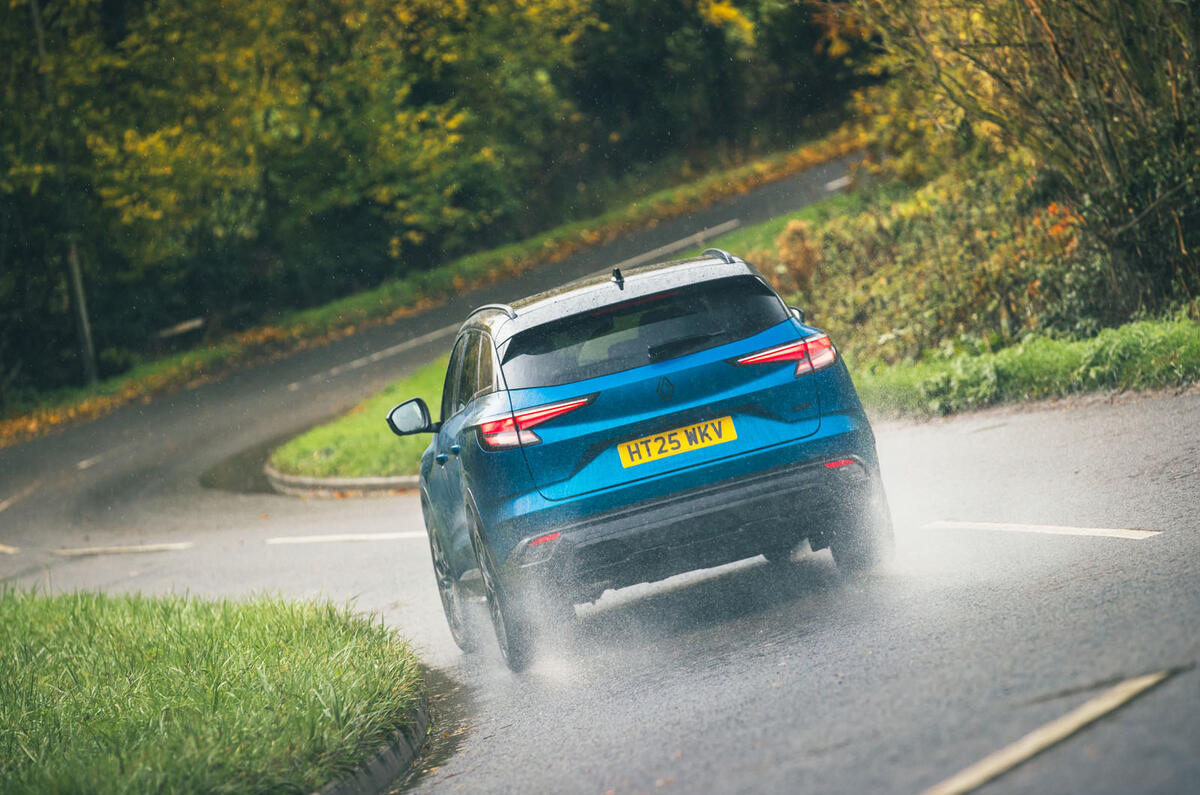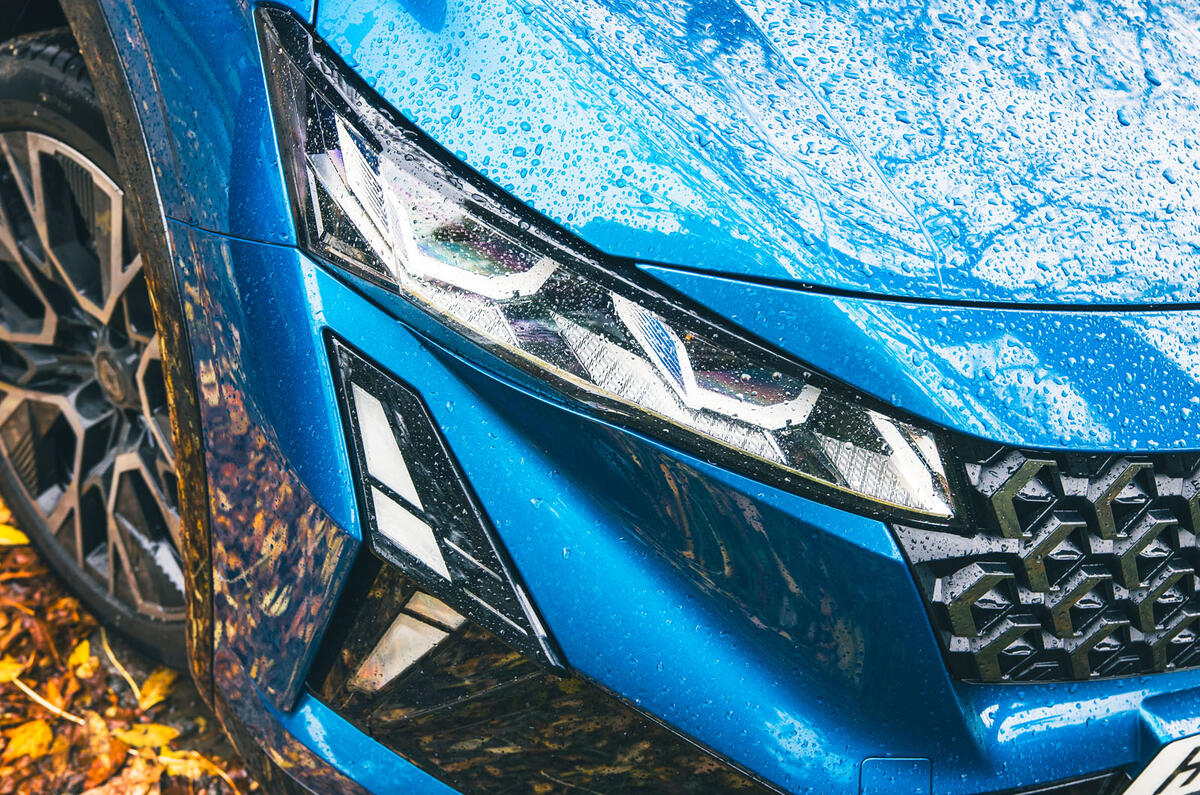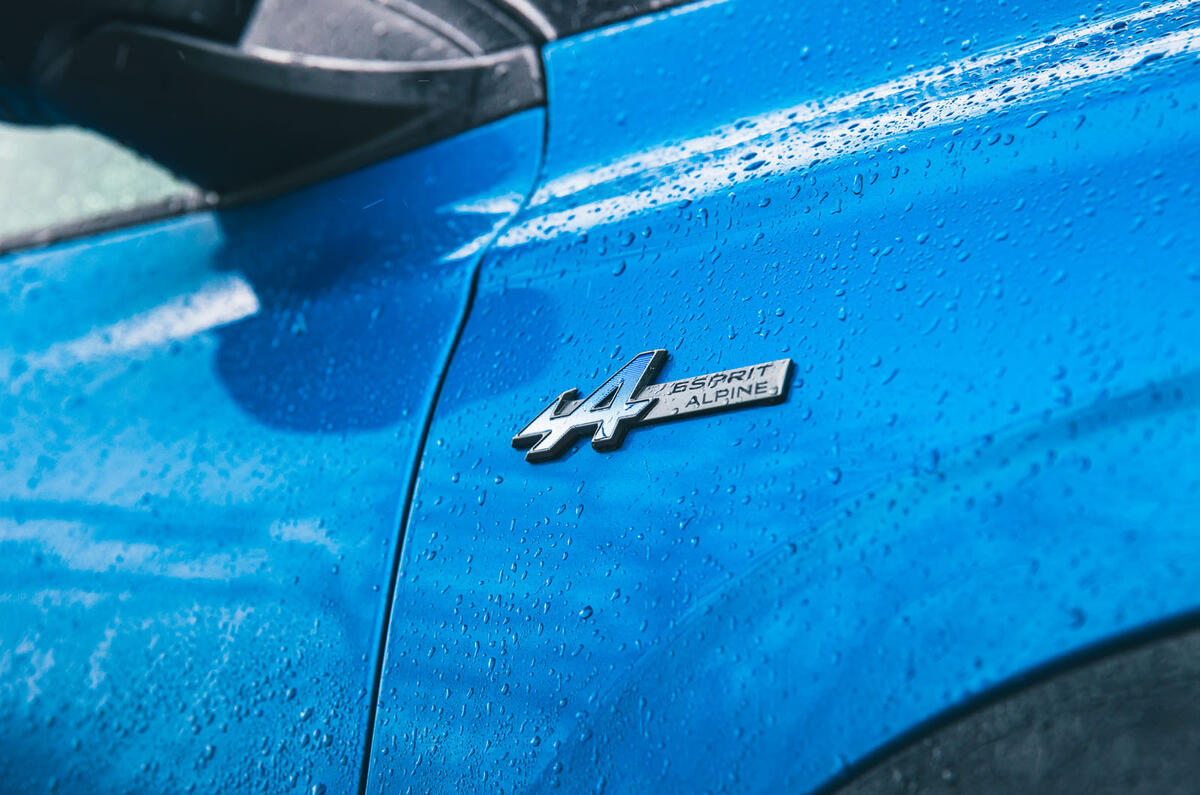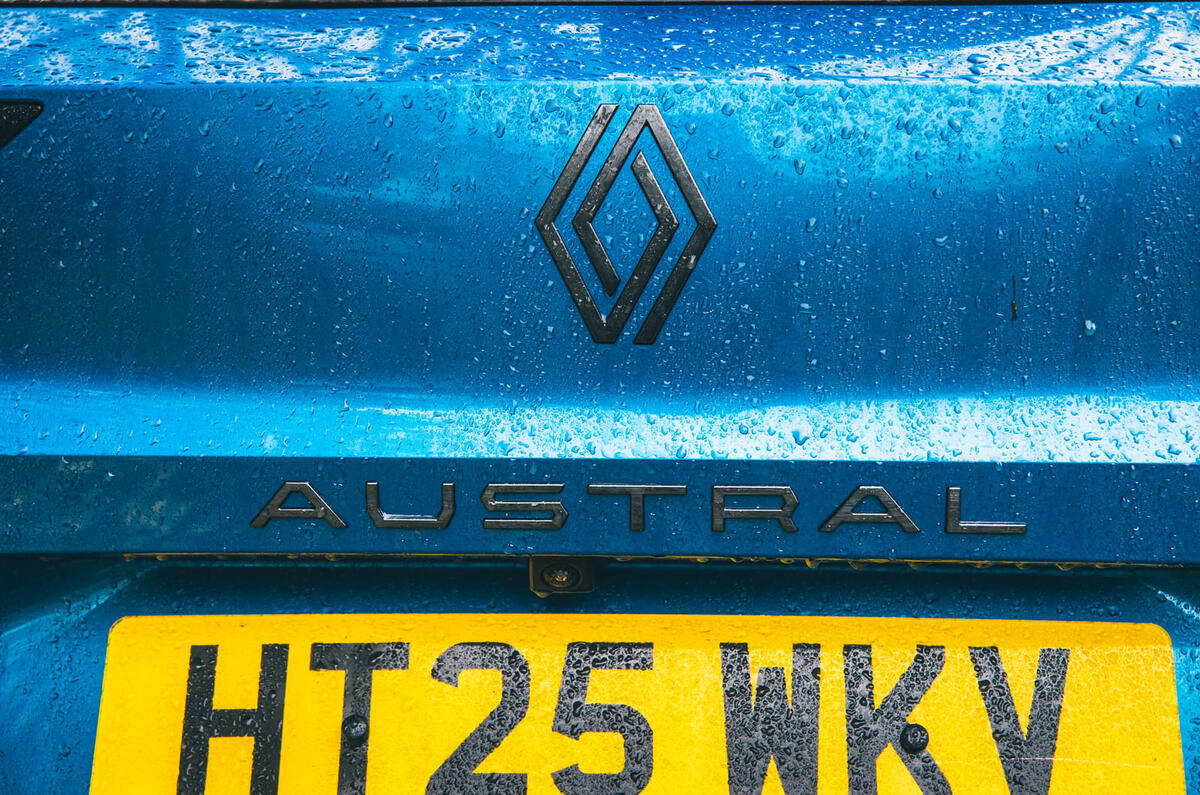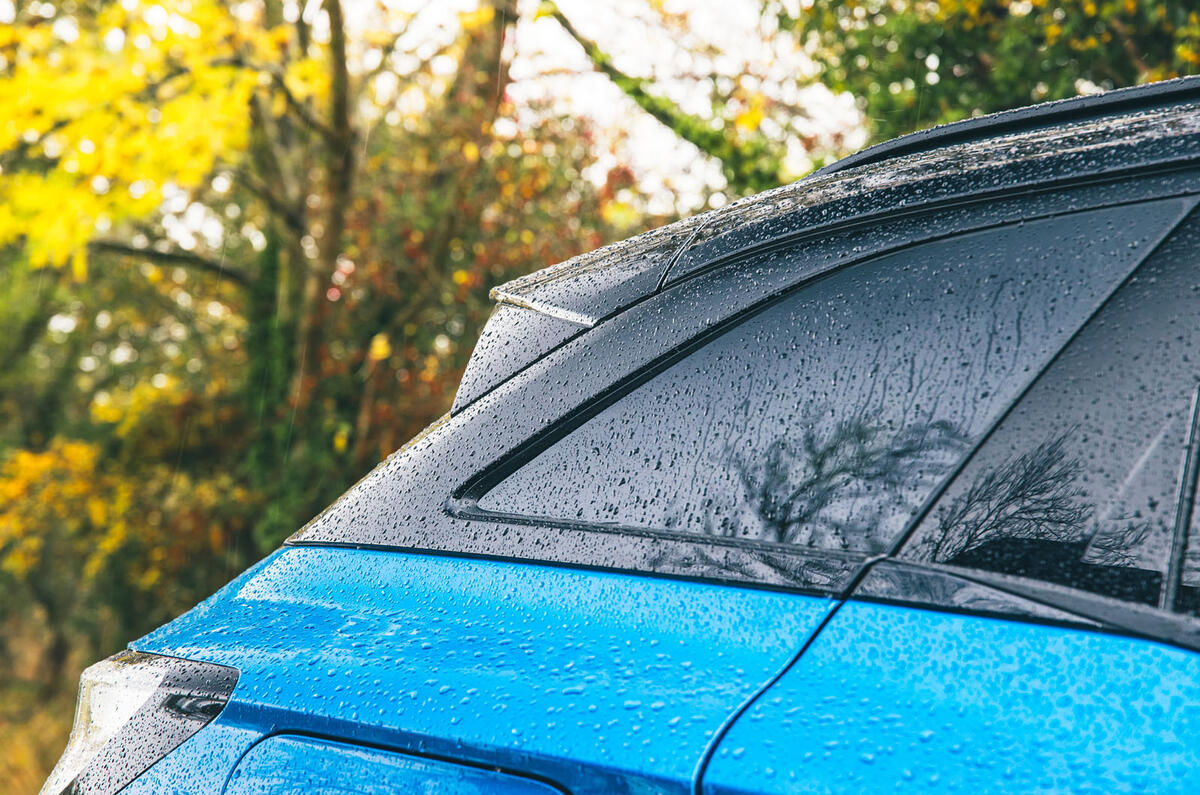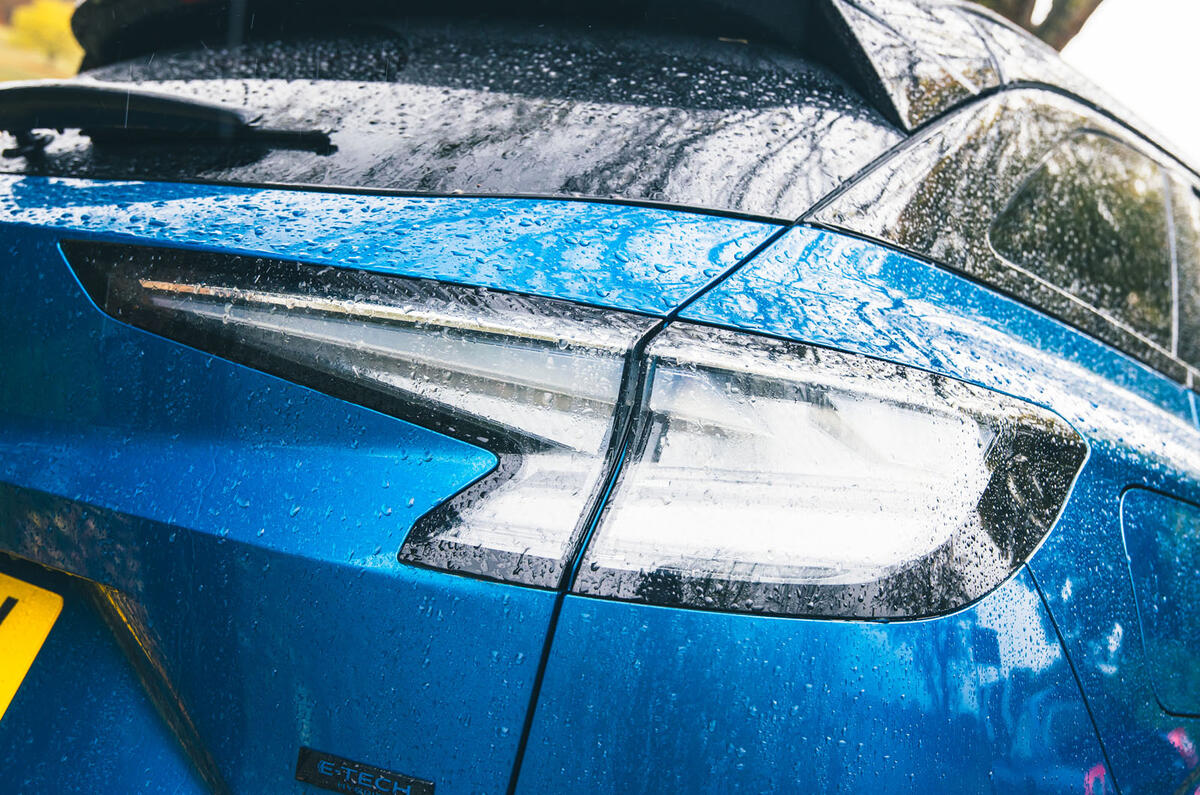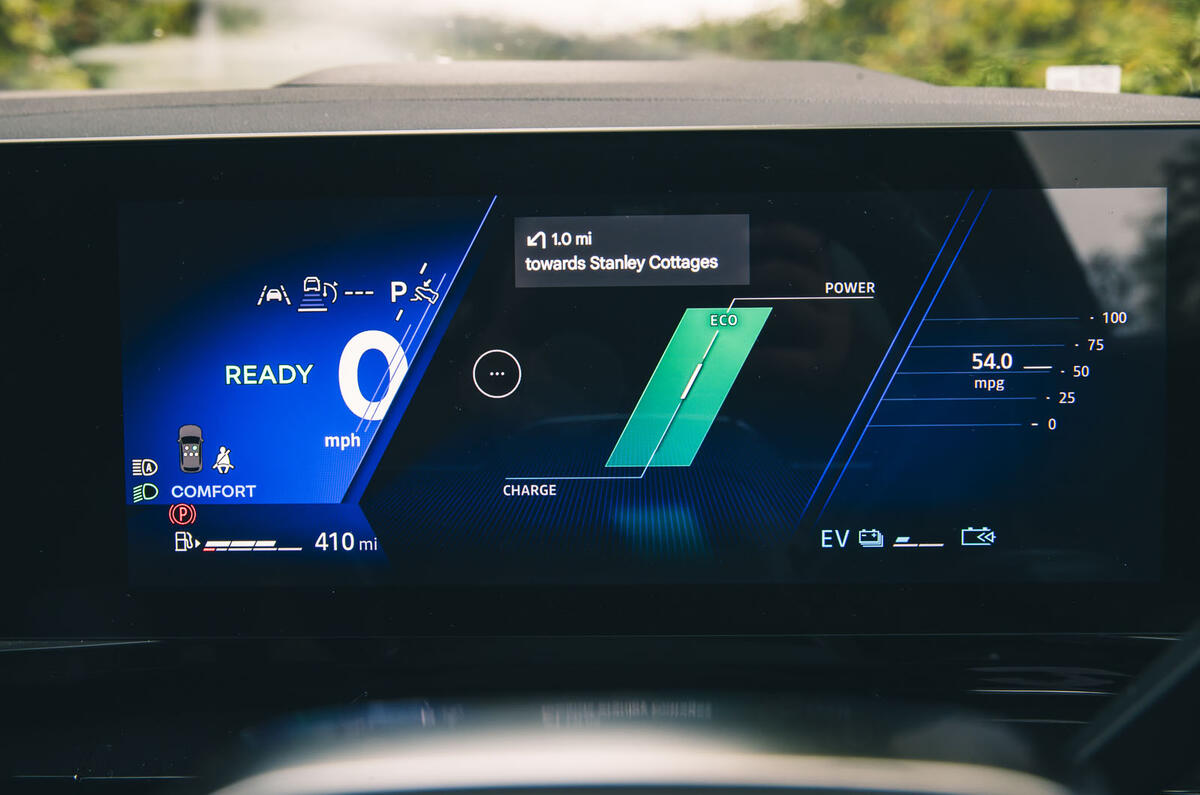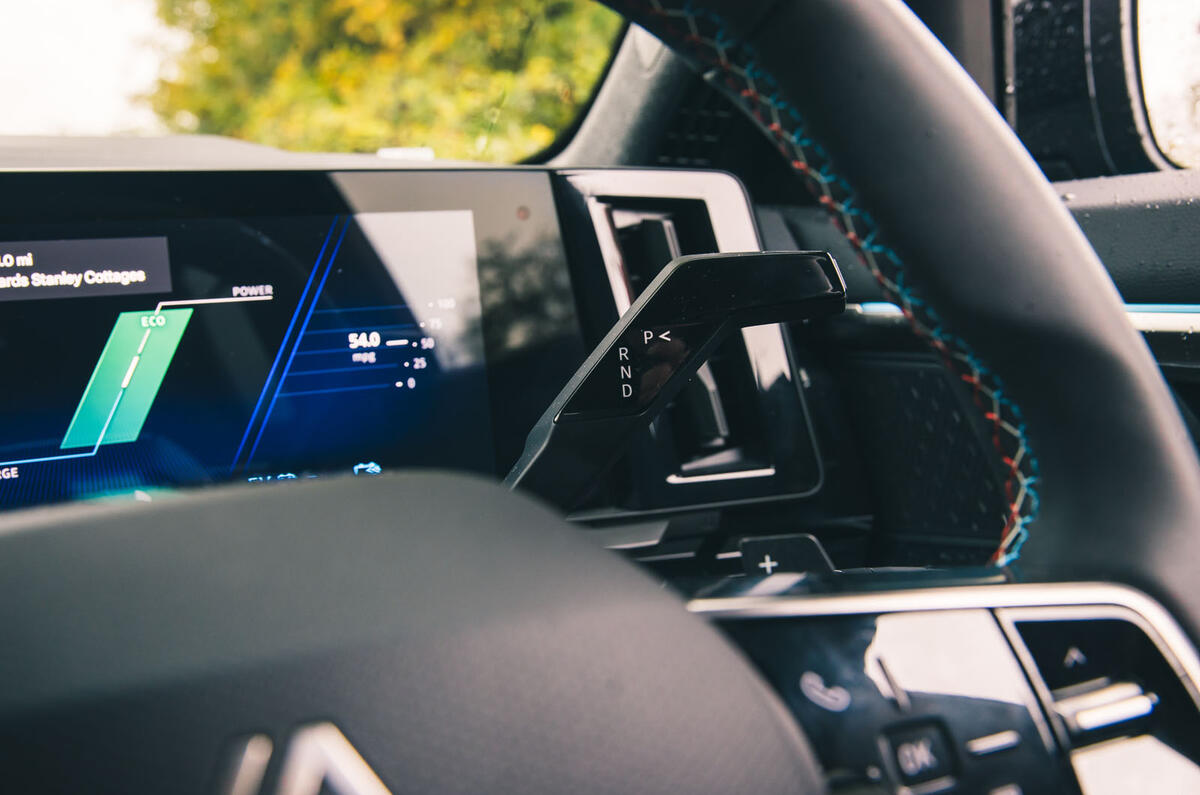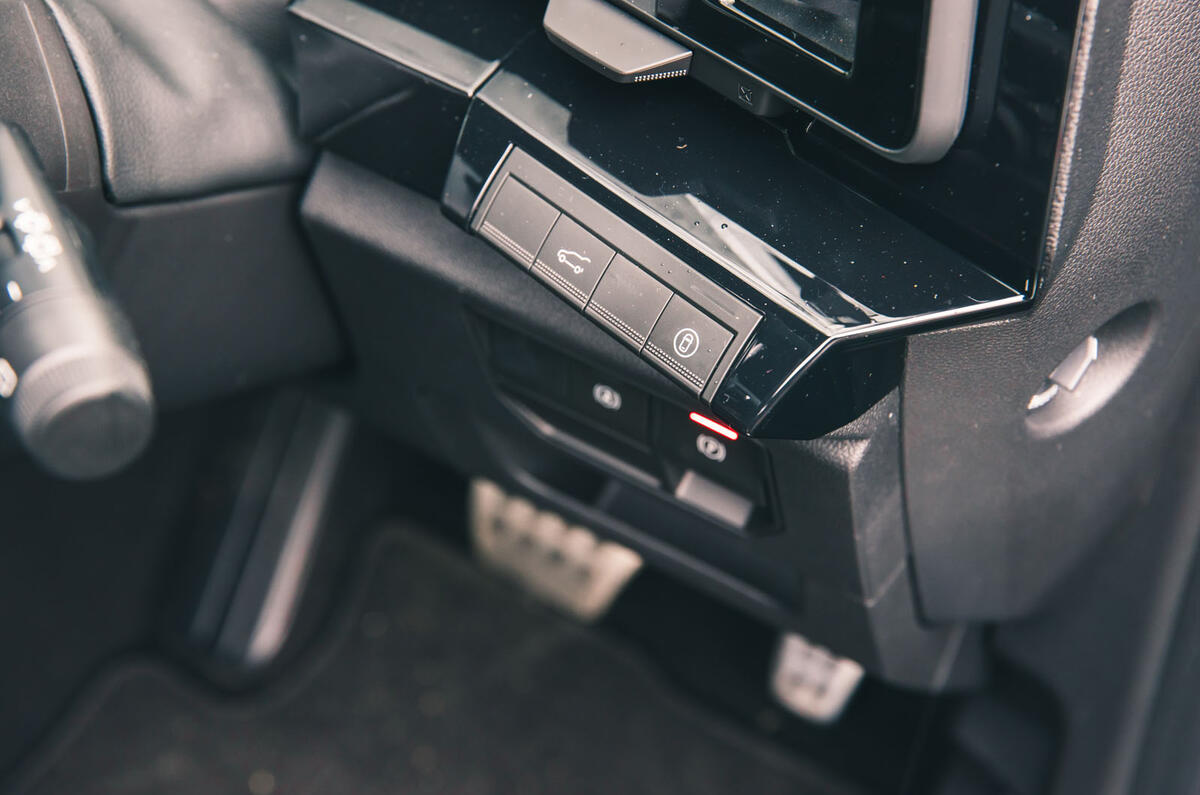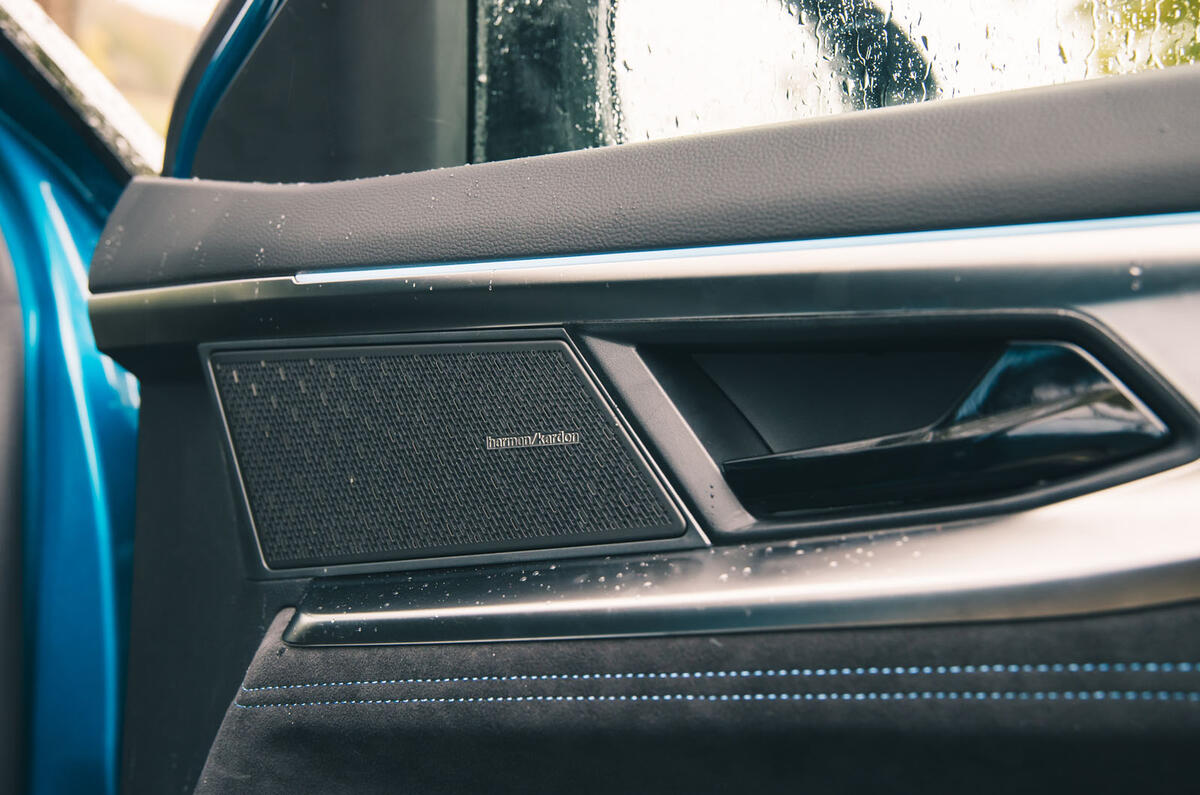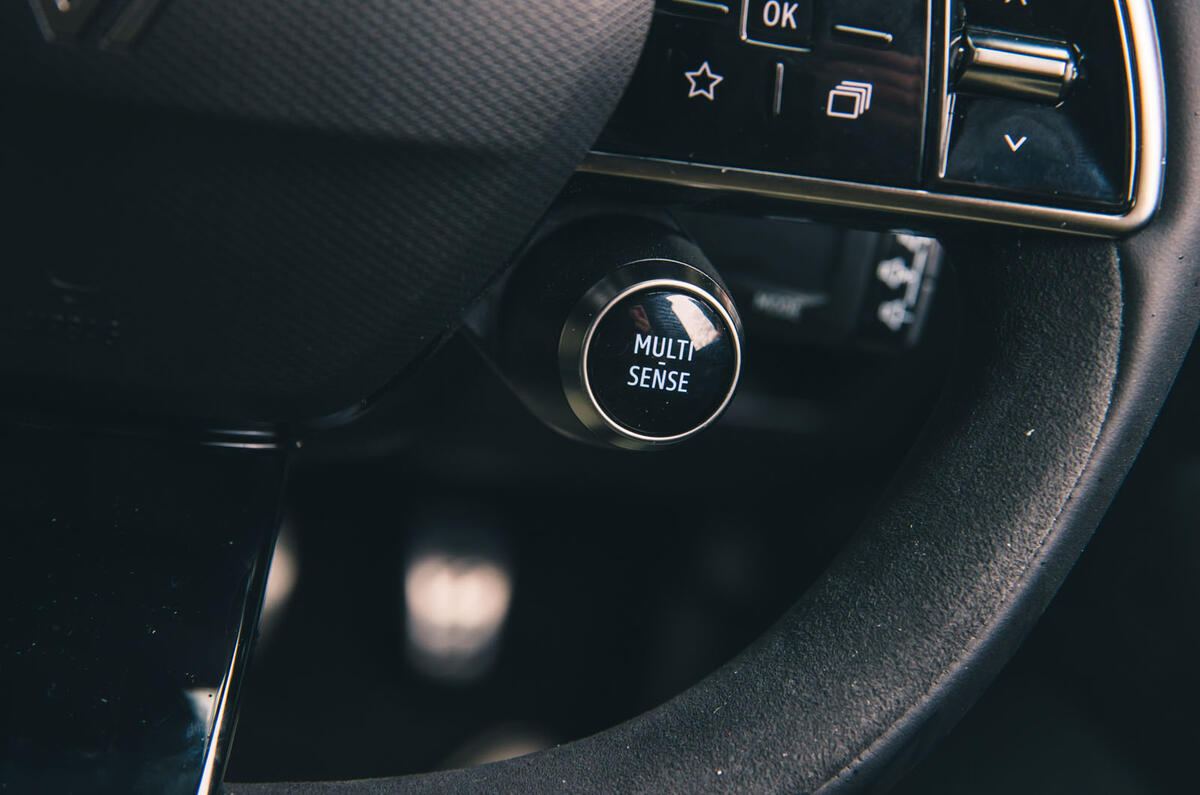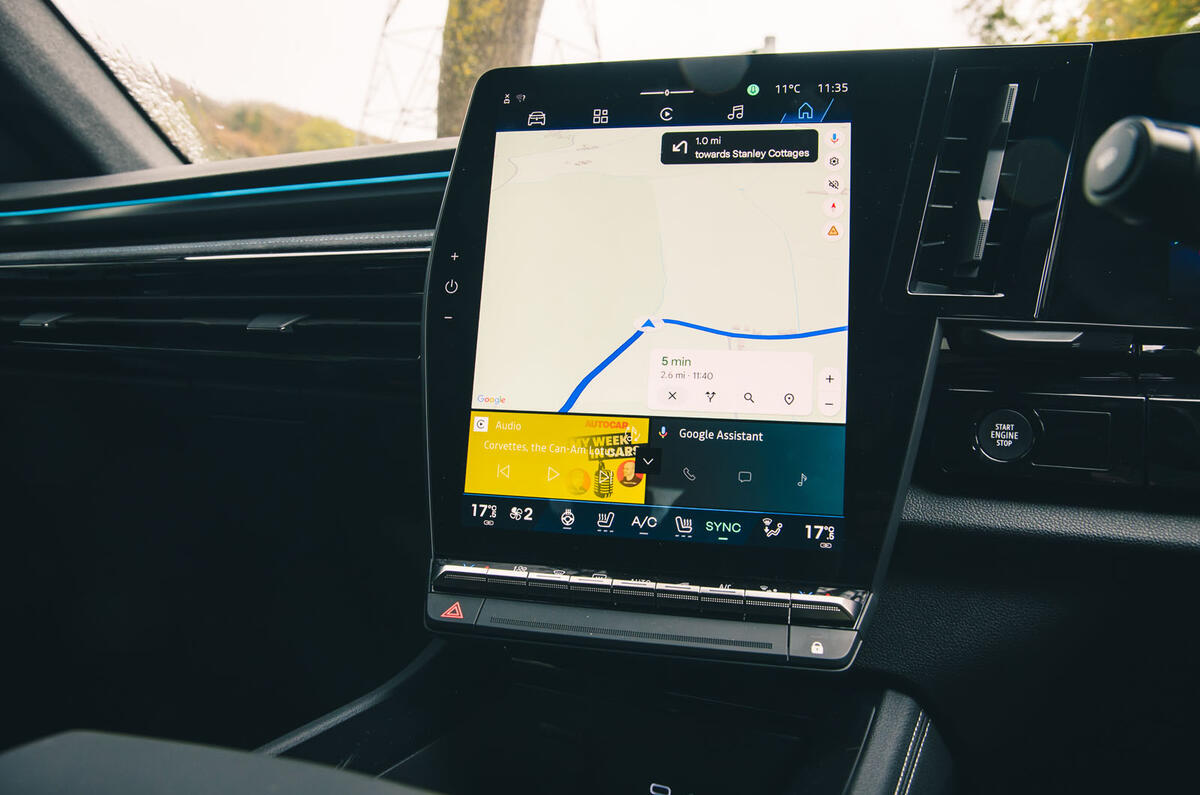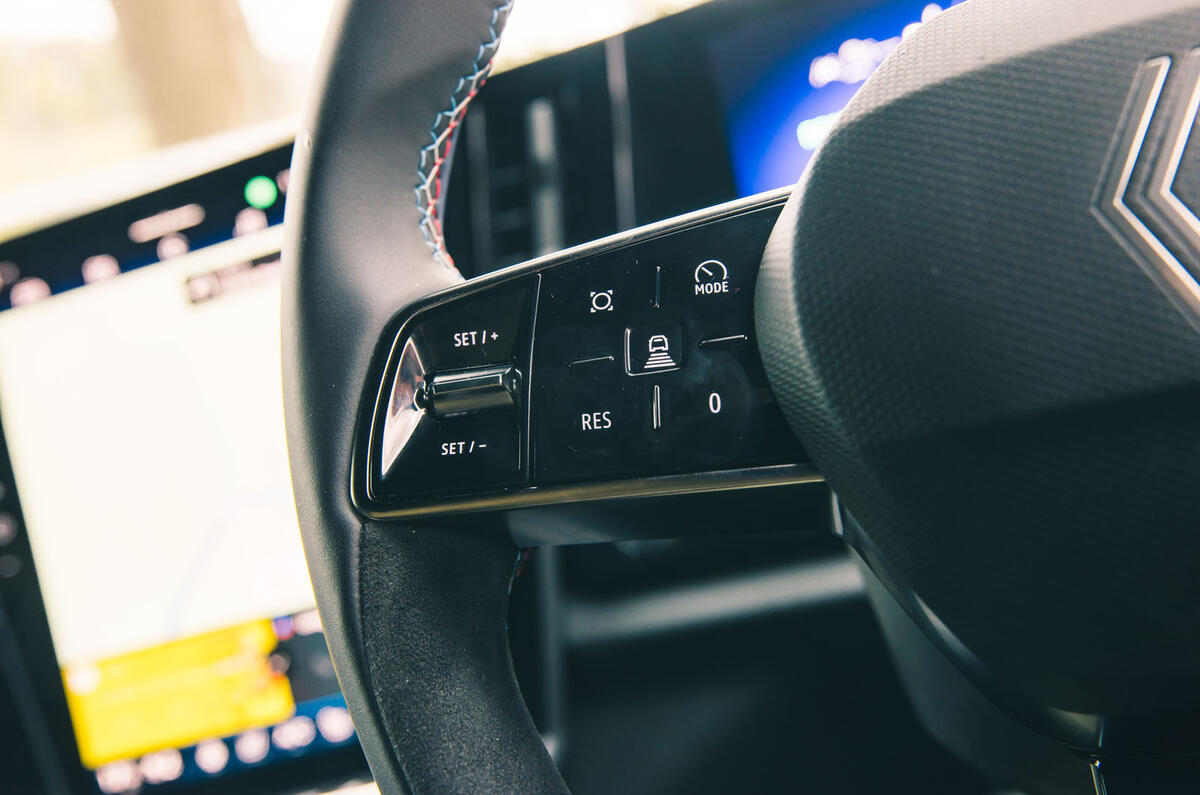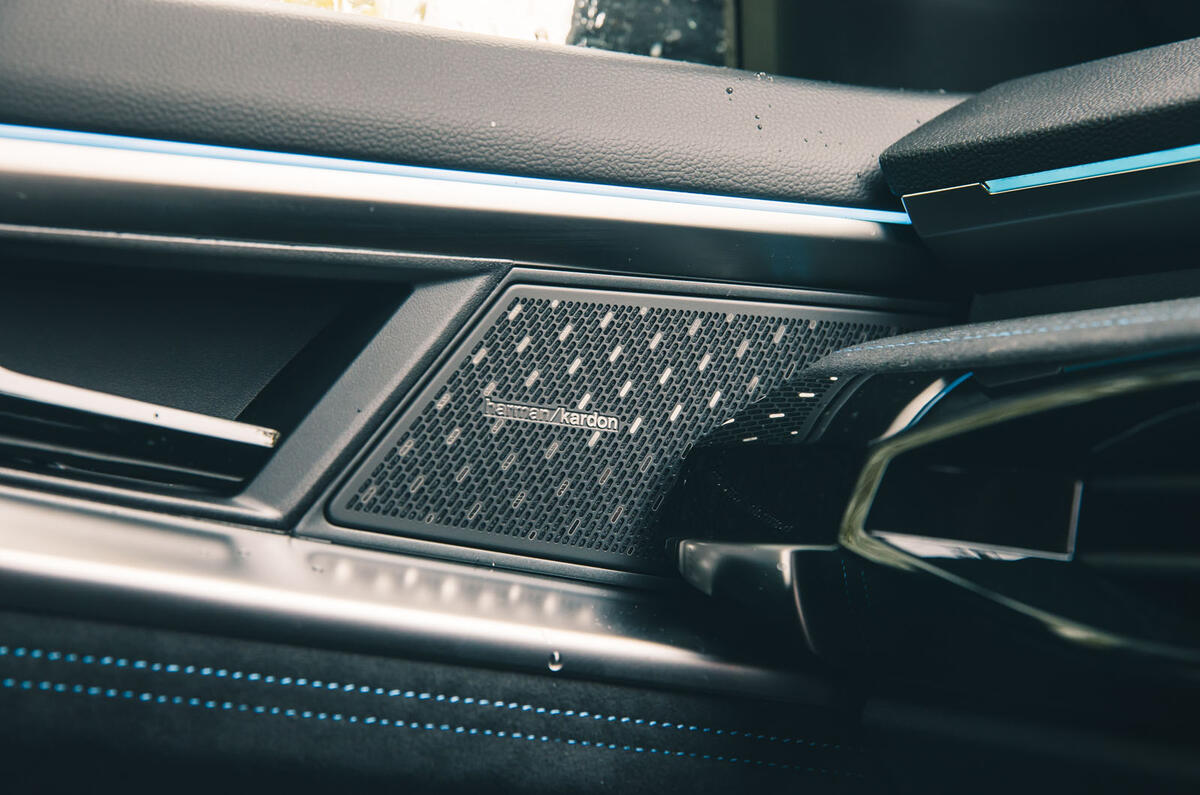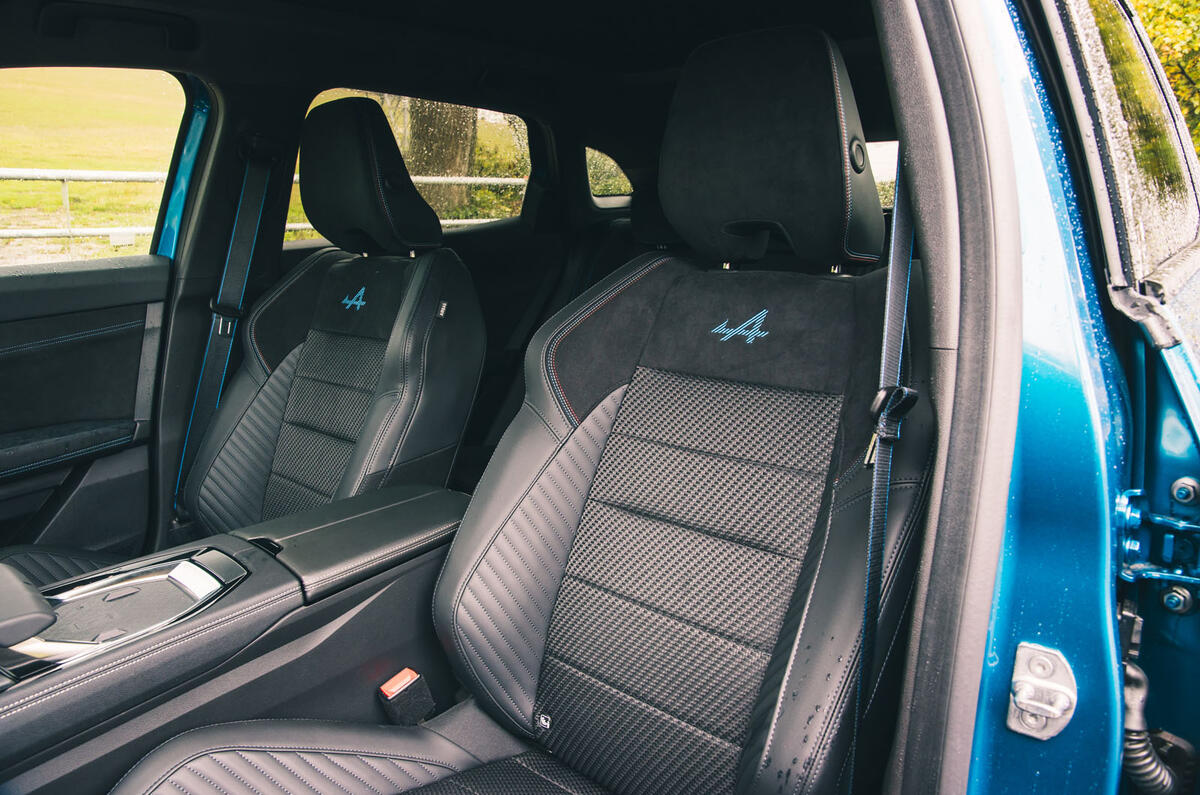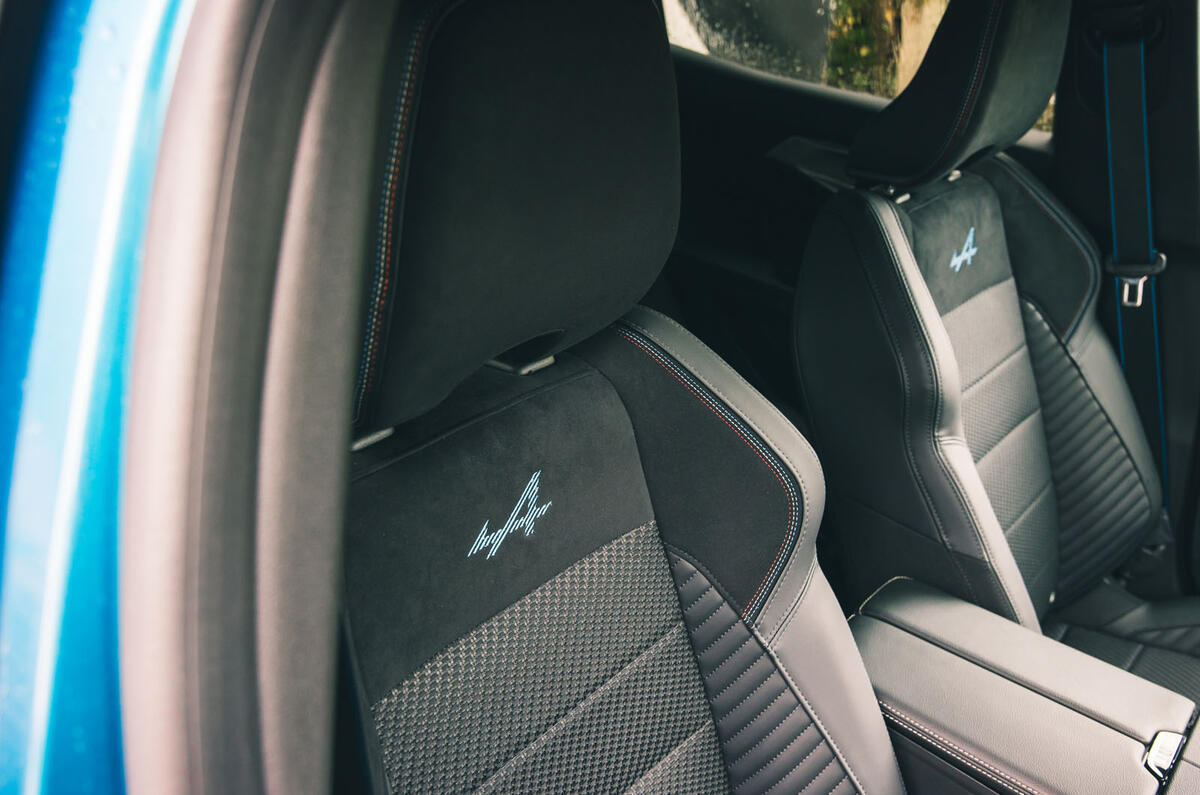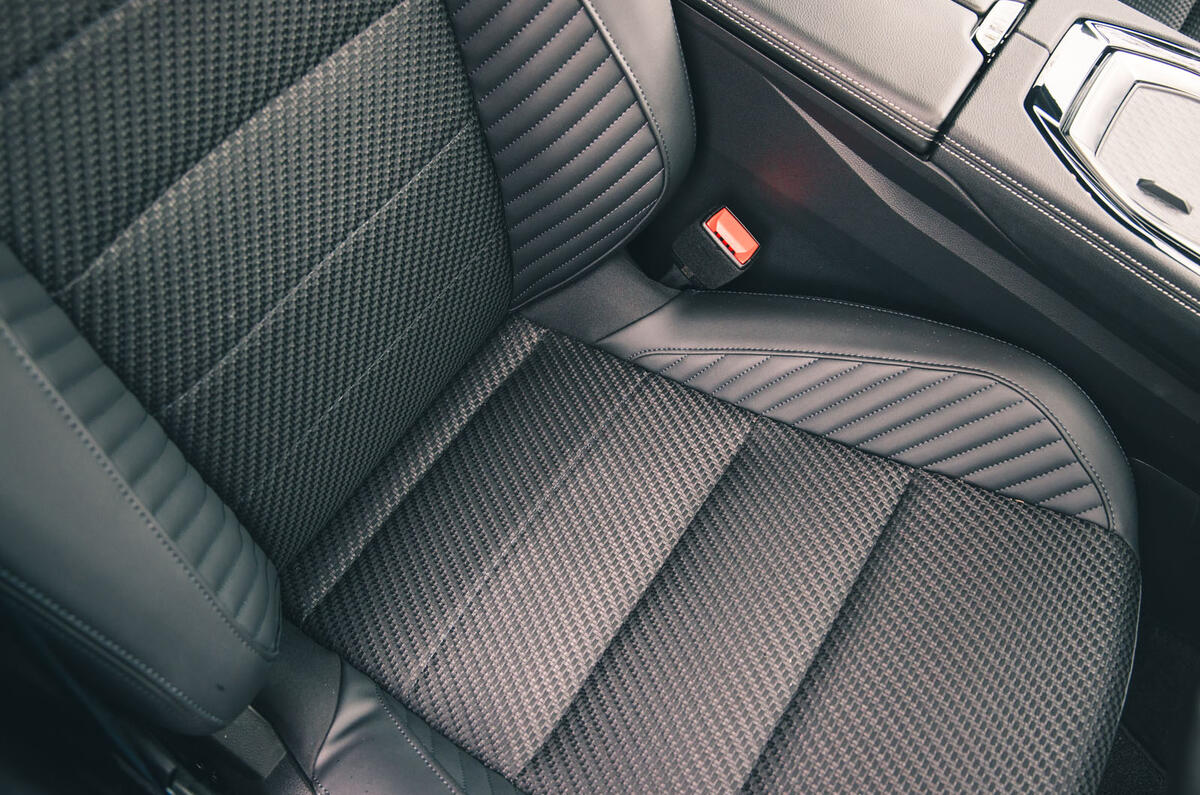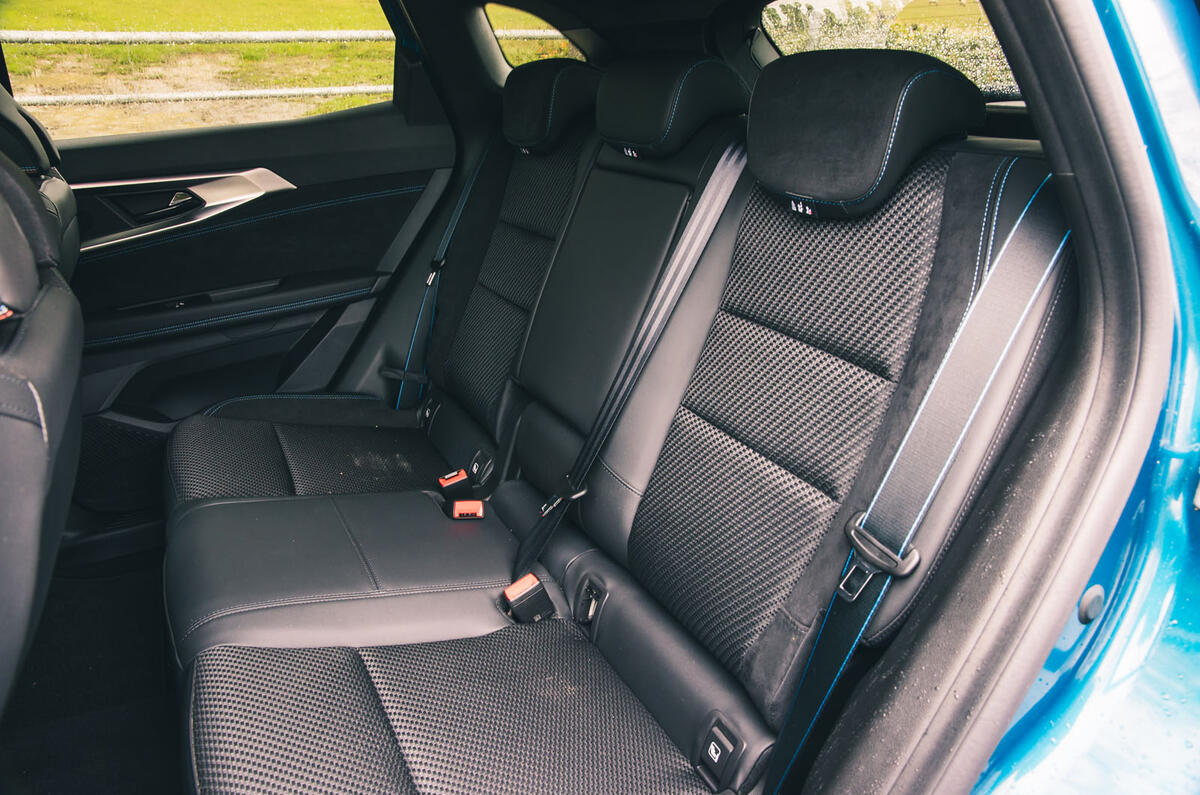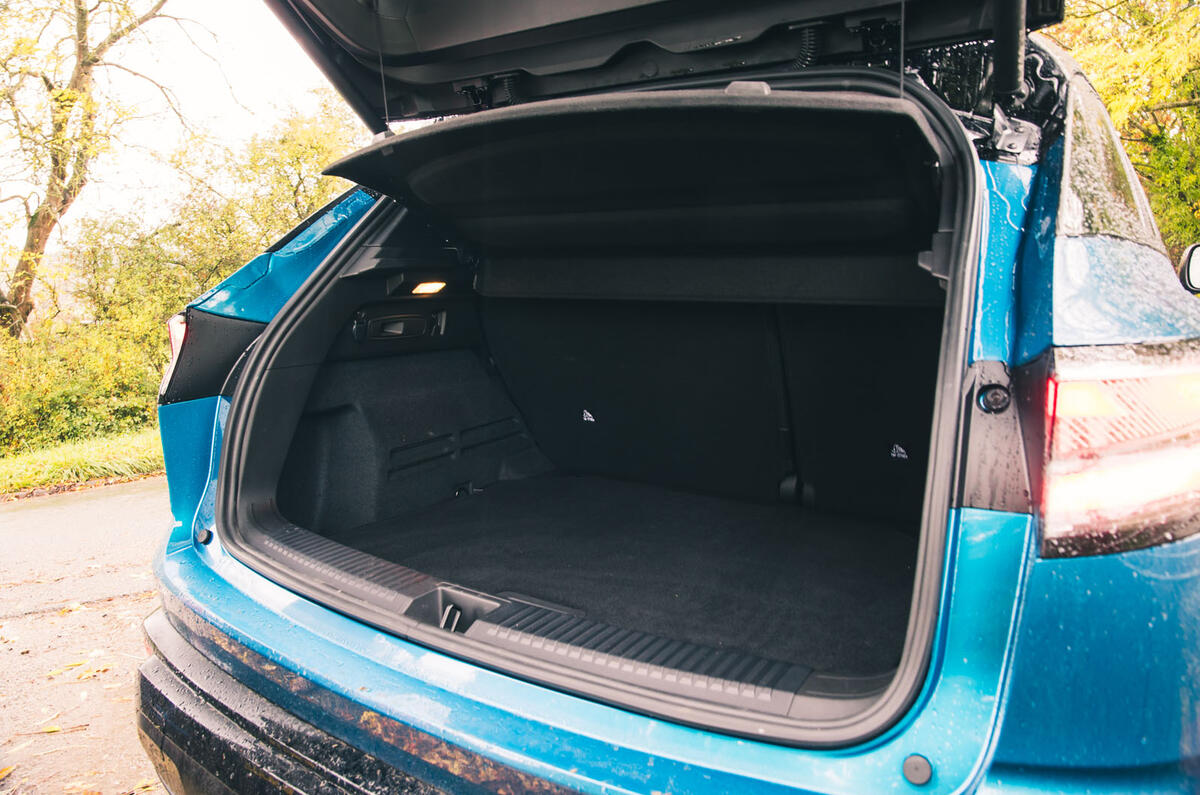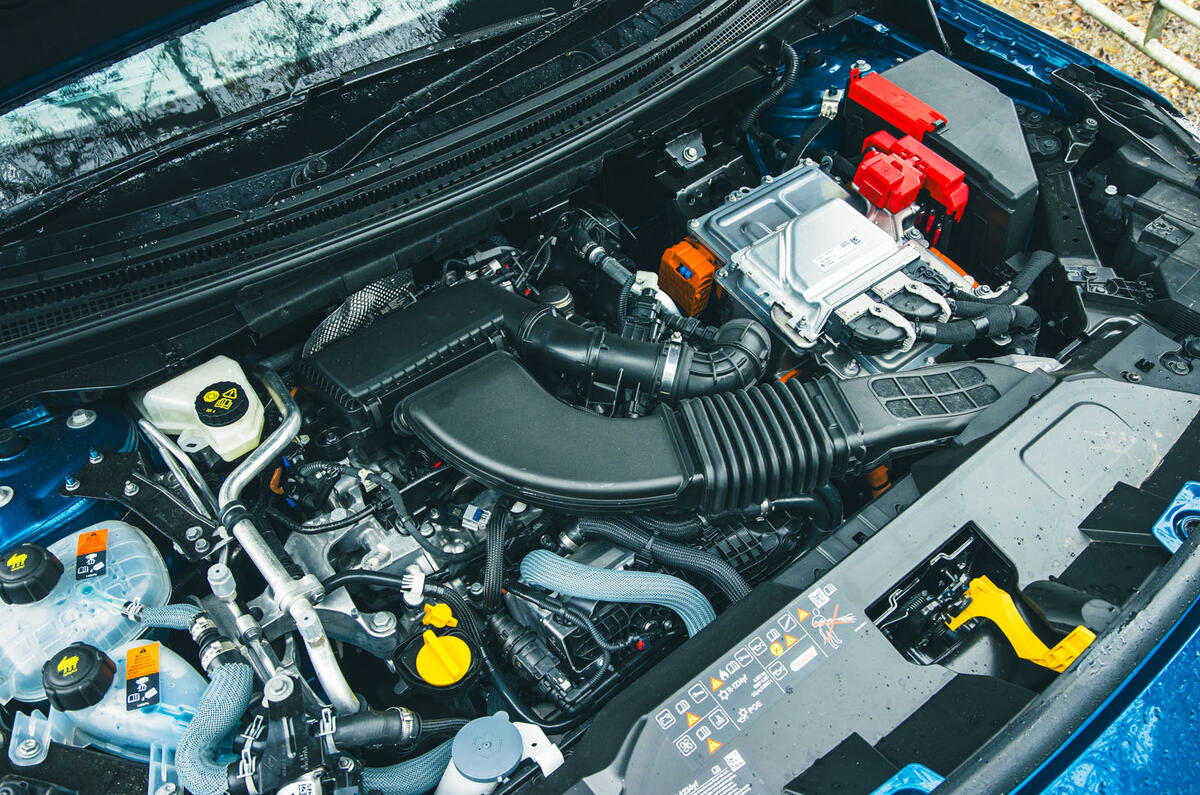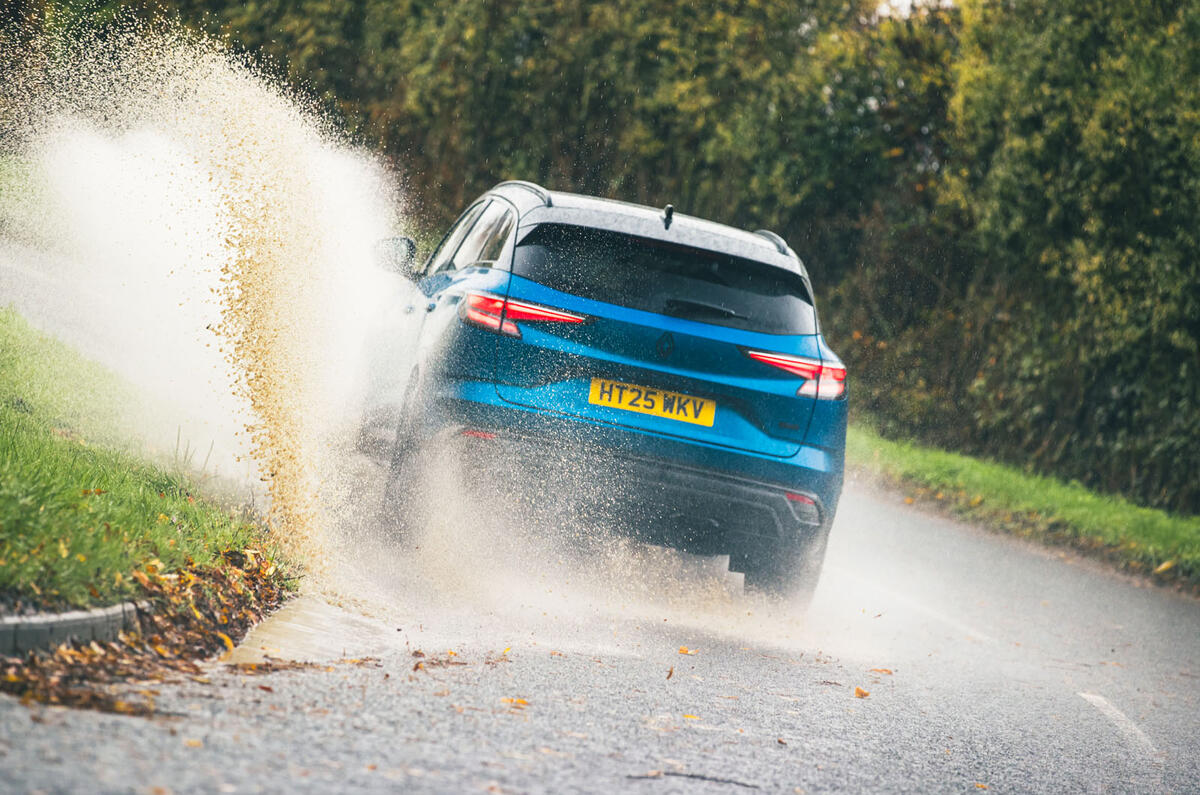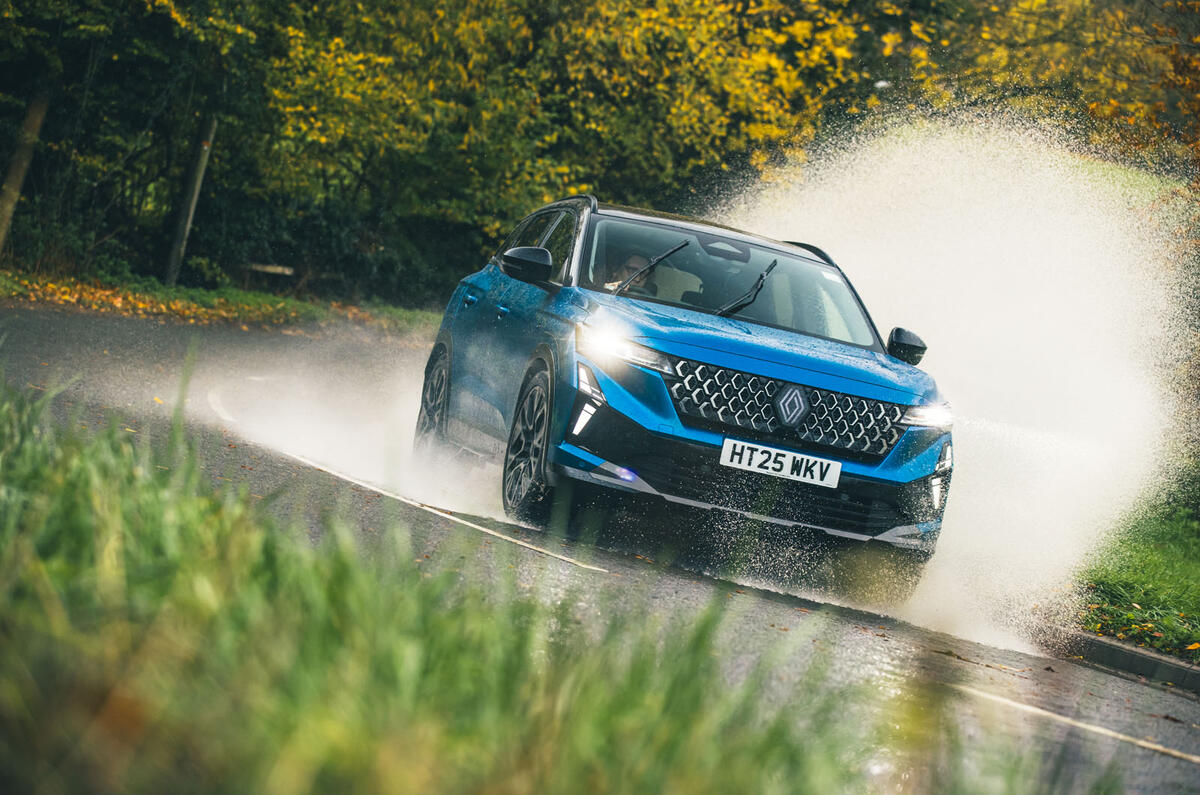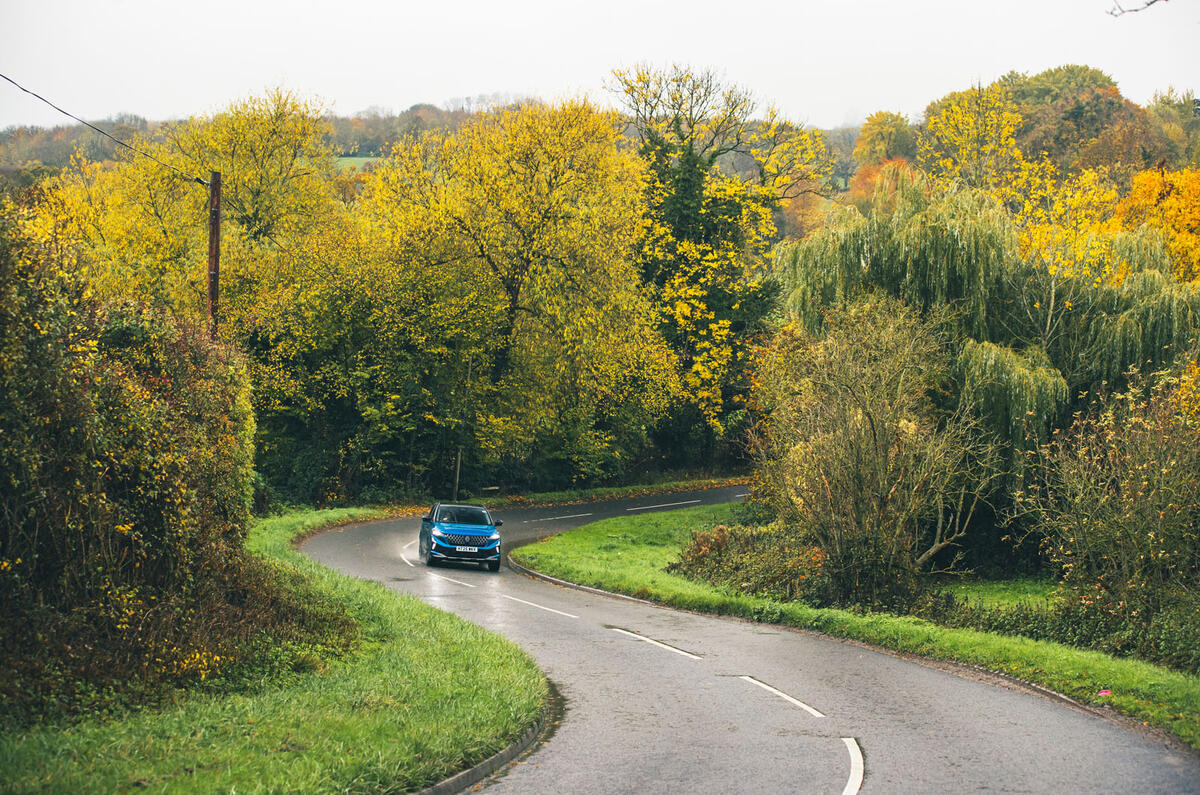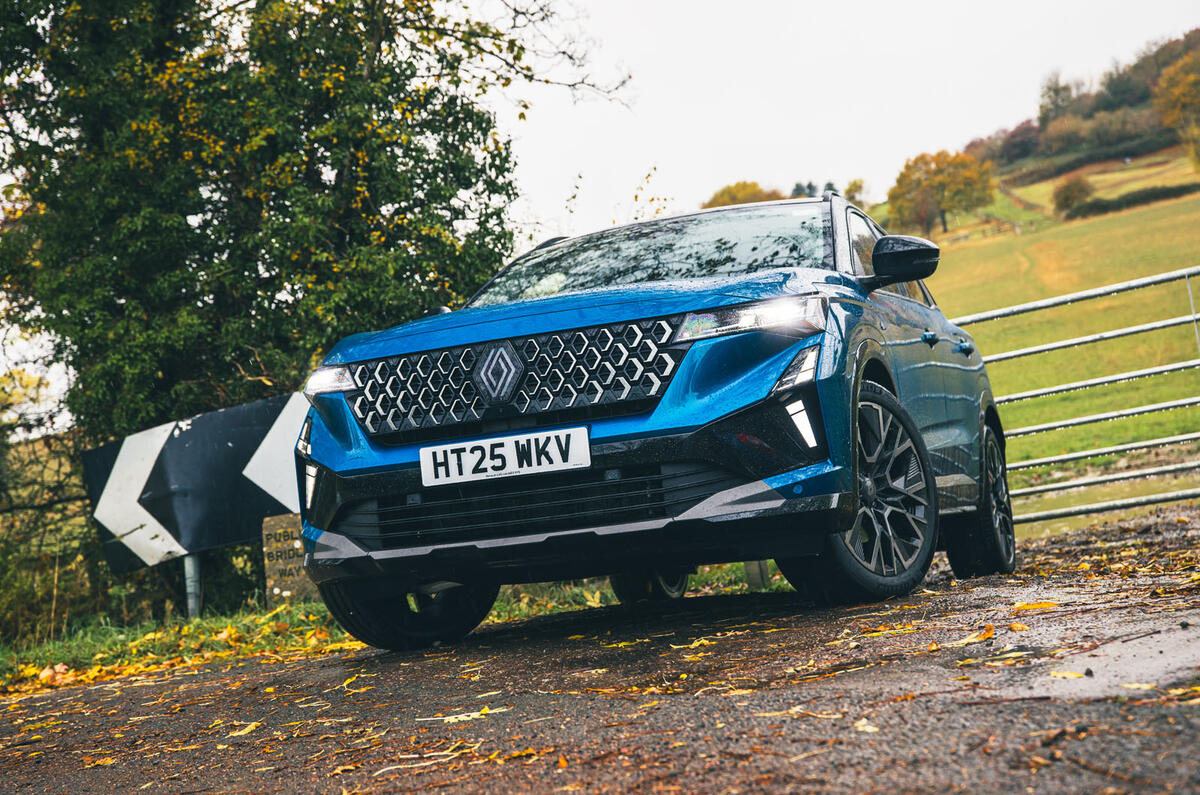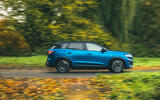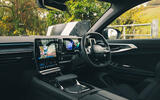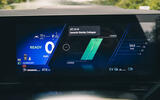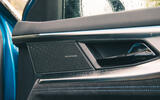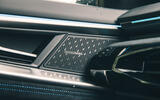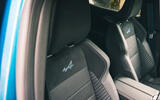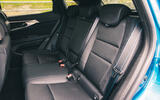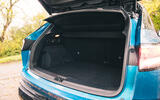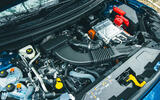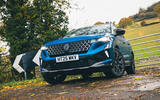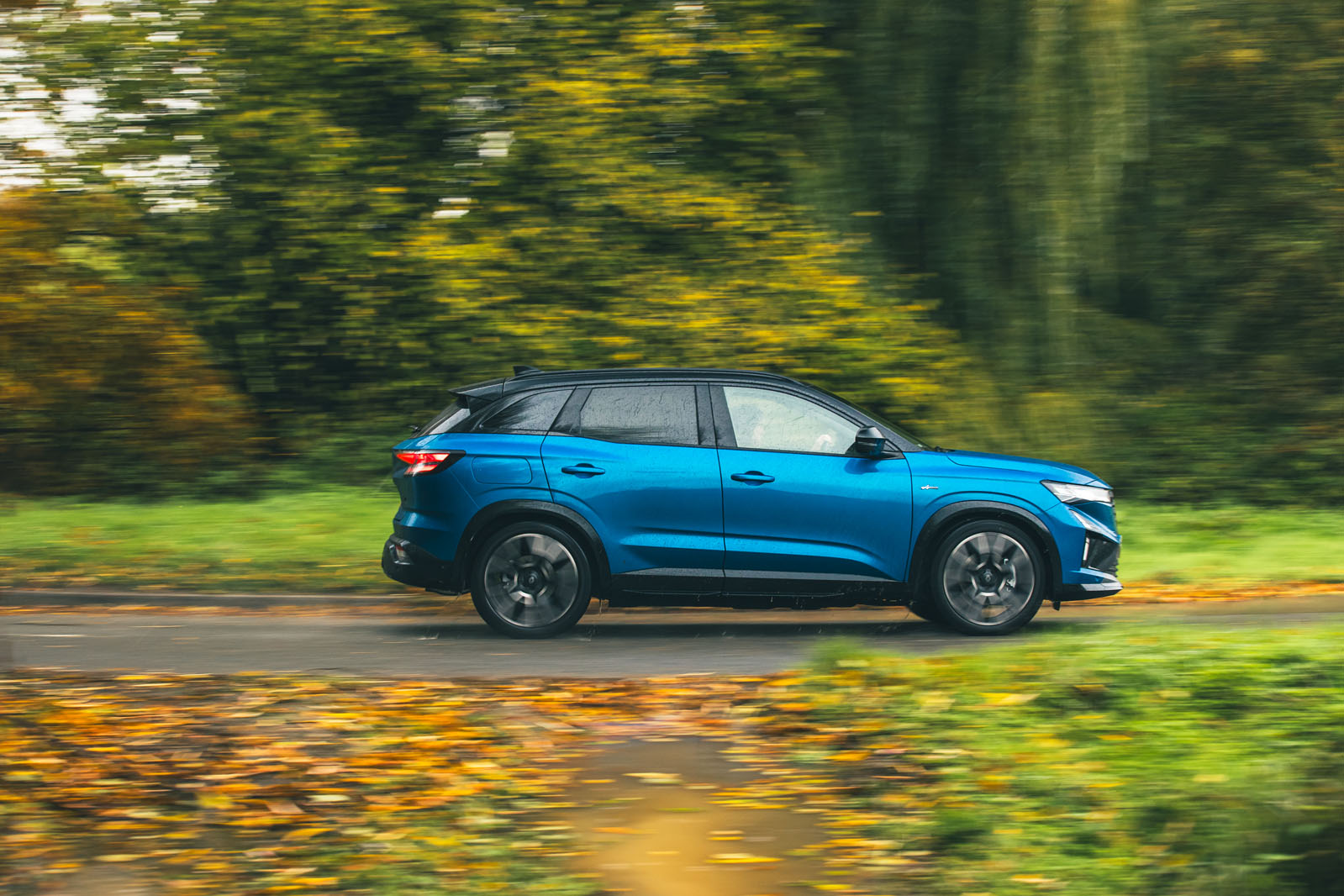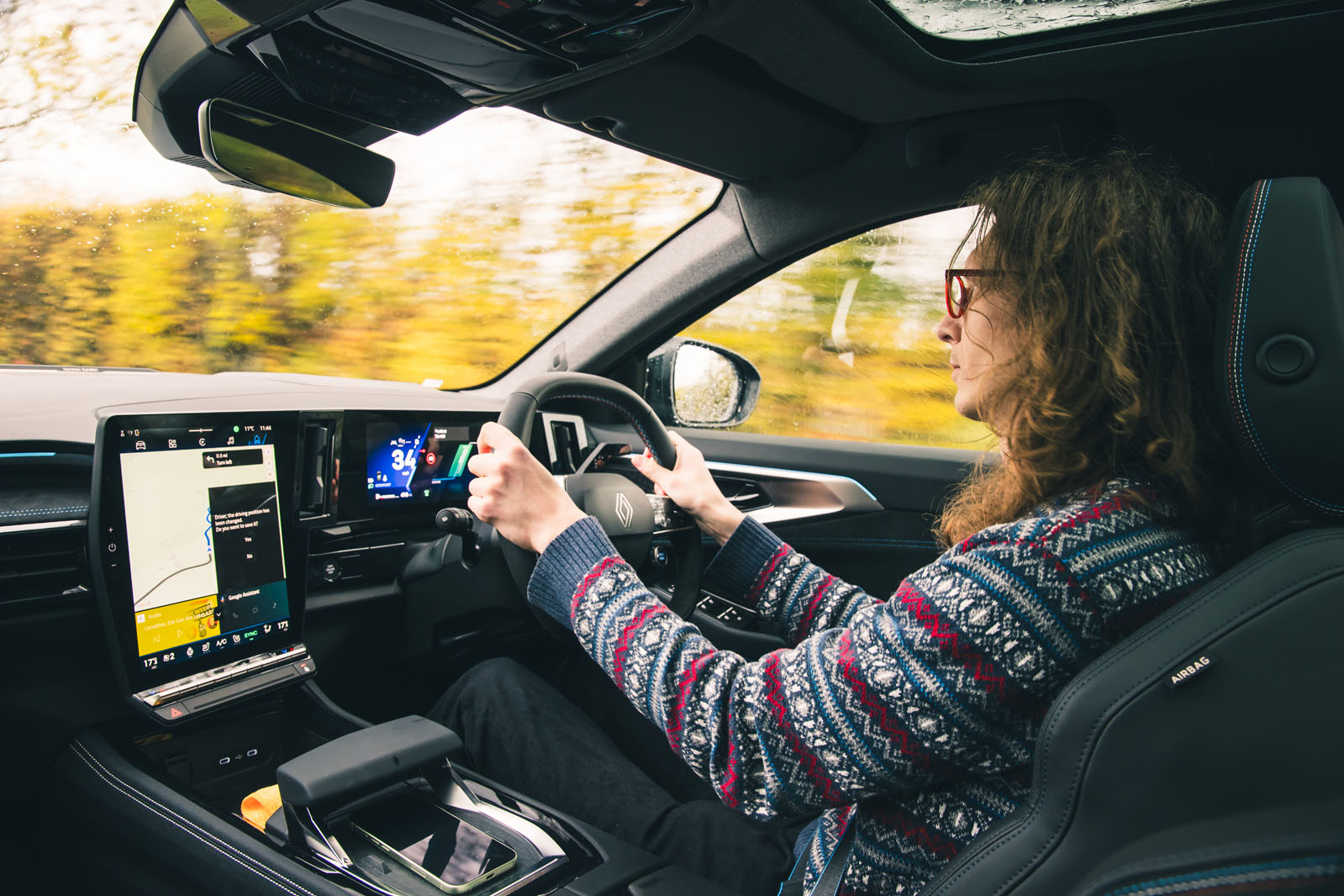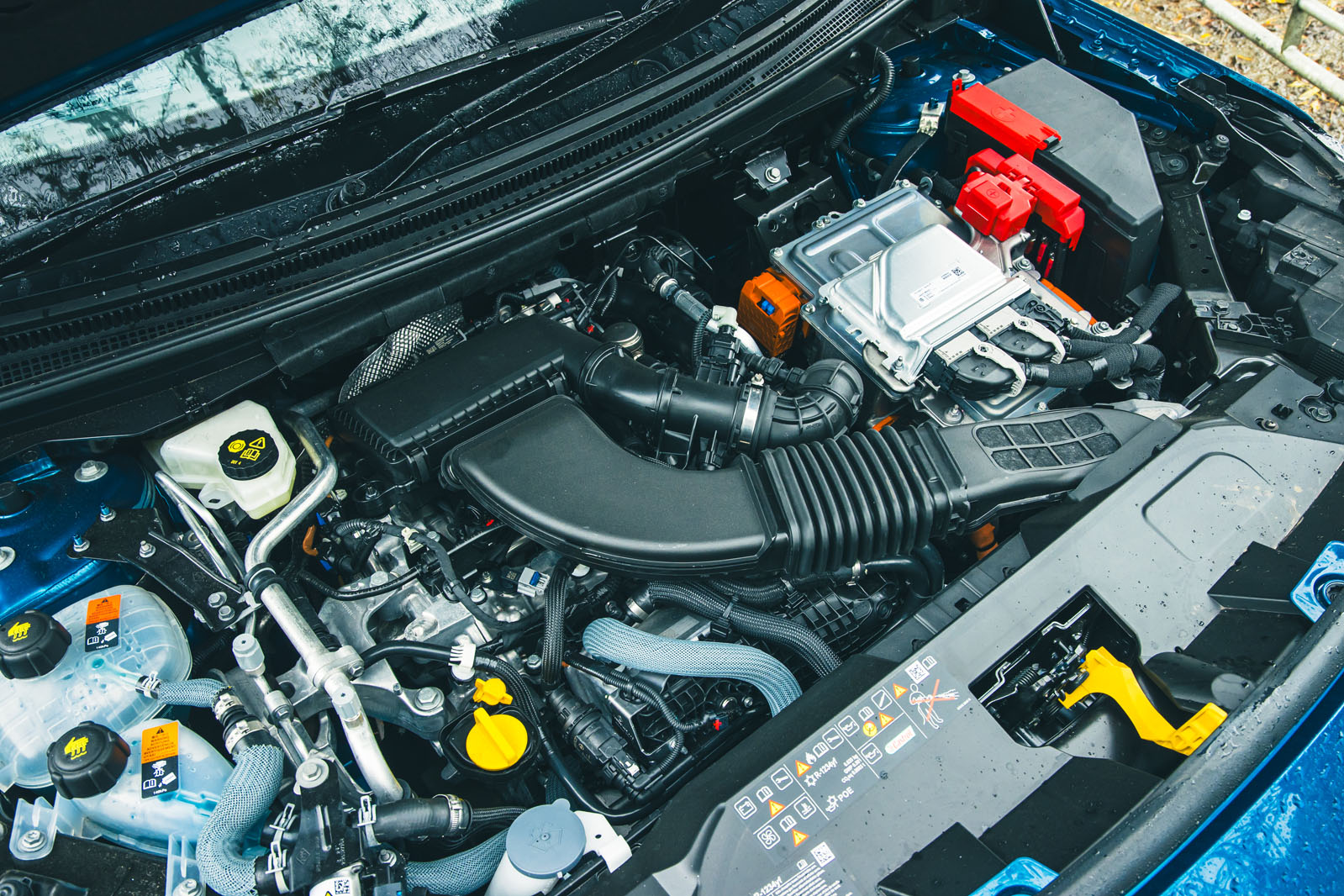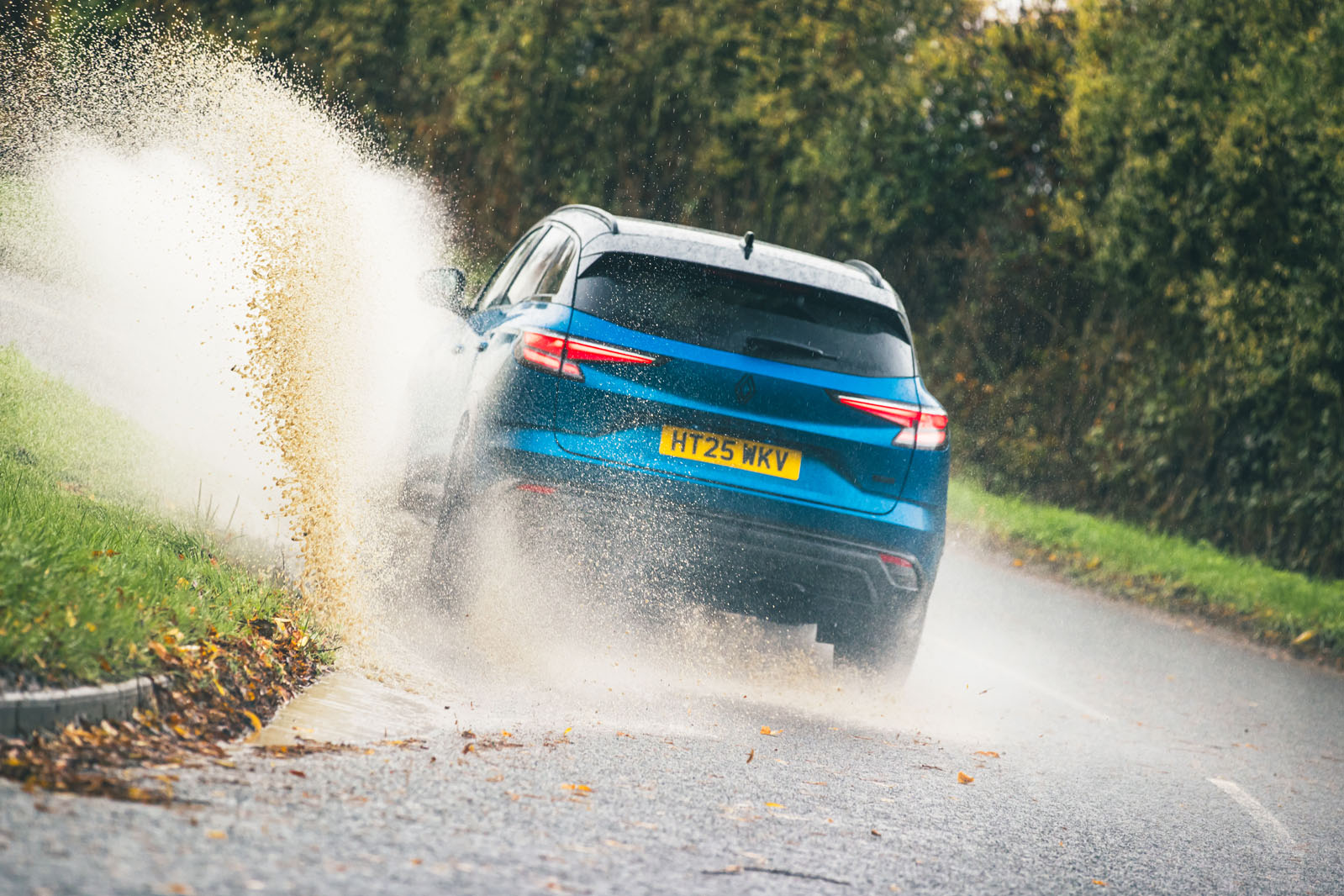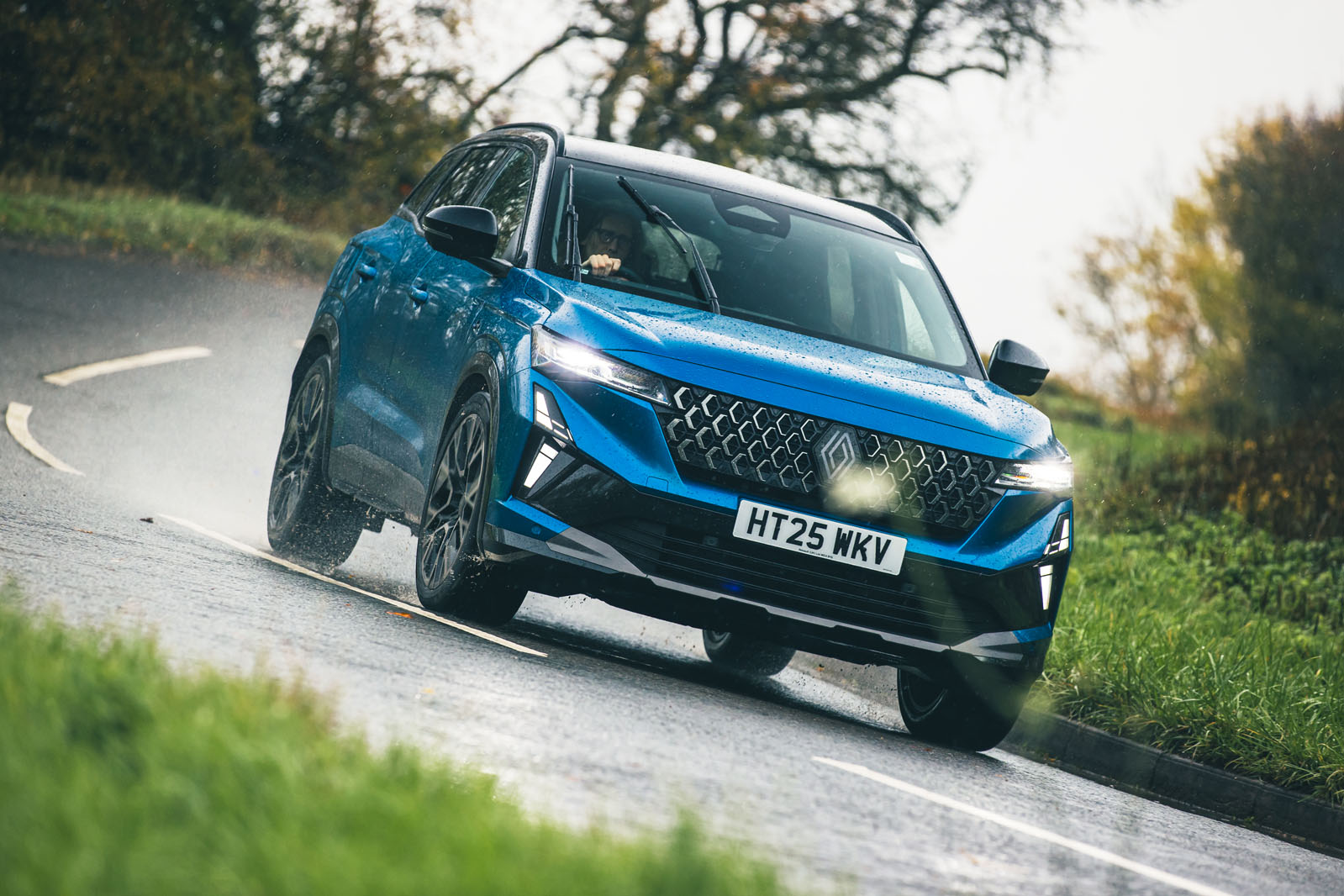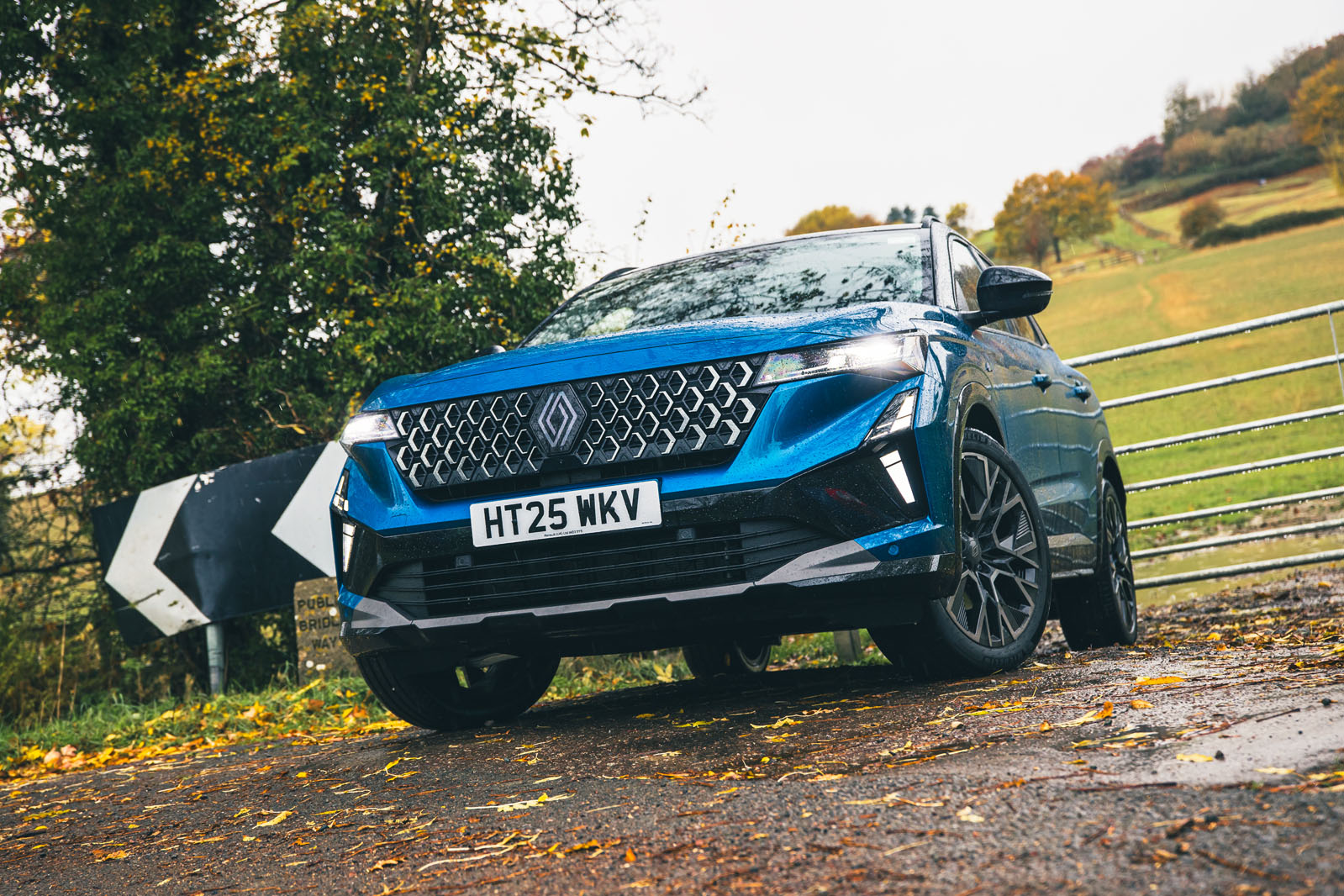As with the technical spec, it’s remarkable how different the Austral’s interior is from the Qashqai’s. You won’t find a single button that’s shared between the two, and where the Nissan is squarer and more businesslike, the Renault is more flamboyant and techy, without neglecting perceived quality. One isn’t necessarily better than the other, but at least it sets the two apart.
The Austral may have its tech front and centre, but Renault hasn’t neglected usability. There are rocker switches for the main climate control functions and the heater setting for the seats is fairly easily accessible on the screen. All the buttons on the steering wheel are real buttons too.
The centre console design is only a partial success. The drive selector is mounted on the column, which is very convenient when manoeuvring and liberates centre console space. The various bins aren’t especially deep, though, because they sit on top of the hybrid battery. As a result, when you want to put anything in the cupholders, you have to slide the phone tray back, making the rear storage bin inaccessible and rendering the palm rest redundant because it will be too far away from the screen.
Up front, the seats are relatively comfortable, and have a massage function but lack cushion tilt adjustment. The Austral’s rear seats offer usefully more leg room than those of the Qashqai and only very slightly less than those of the Sportage.
Boot space is a little tighter than in the Sportage (527 litres versus 587) and can be expanded further by sliding the rear bench forwards. The rear seats don’t fold completely flat, but the handles positioned in the boot area to release the seatbacks are a useful touch. It’s an otherwise fairly practical space, and if you choose a trim level without the Harman Kardon stereo (and its subwoofer), there is a big space under the floor that can optionally house a spacesaver wheel.
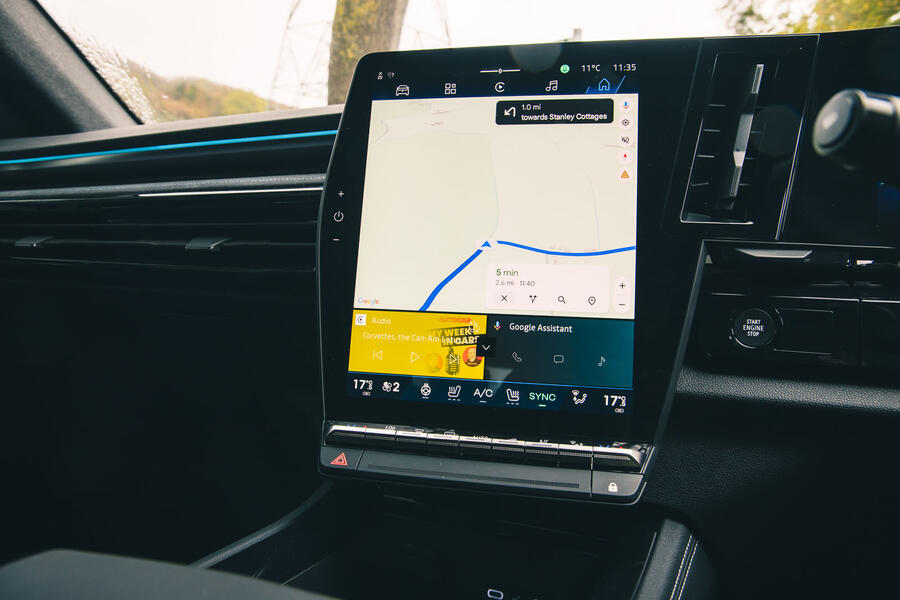
Infotainment
Like other recent Renaults, the Austral uses the brand’s Google Android Automotive-based multimedia system, which we know as logical and responsive. Having it projected on a larger, 12.0in screen can only be a good thing, because it gives a bit more room to various shortcuts and widgets than in cars like the 5.
Being Google-based, the native navigation is Google Maps, which is excellent, and it comes with the benefit that you can simply log in to your Google account and have your home and work addresses, as well as the recent searches you made on your phone or other devices, waiting for you. There is also an app store with third-party services such as Waze navigation. To keep everyone happy, there’s wireless Apple CarPlay and Android Auto, which integrate very well with the native interface.
Renault persists with its media stalk behind the steering wheel and it works well once you get used to it, although a physical volume and tuner button in the centre console would have been welcome. This also means the right-hand side of the steering column has three stalks: for the drive selector, the wipers and the media control. Some testers got on well with this set-up, others found it too easy to accidentally flick on the wipers during a three-point turn.




